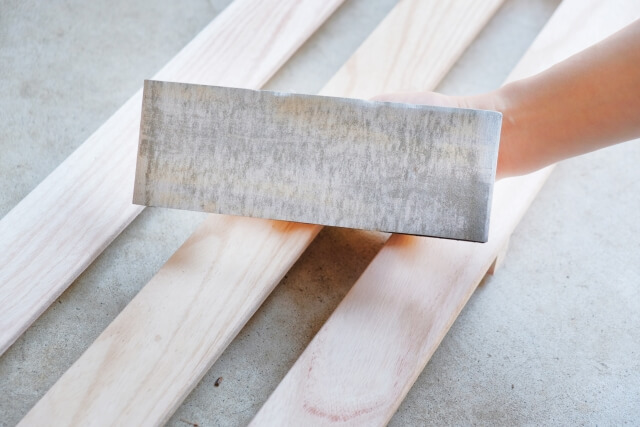What is an abrasive process, polishing? Grinding? What are the different methods of abrasive processing? ~What is the difference between polishing, cutting, and grinding? Let's learn the meanings of the words used to describe grinding and polishing! ~part1 ~ What is the grinding process?

How many idioms do you know about grinding and polishing?
<Grinding, Cutting, Grinding
Surprisingly, there are many words that mean grinding and polishing.
<Grinding, cutting, and grinding are combined with machining and called "polishing," "cutting," and "grinding,"respectively, and all three are actually removal processes.
At first glance, these words conjure up images of the same sharpening and polishing, but there is actually aslight difference in their original meanings.
I would like to explain the difference between the two in a three-part series, including this one.
If you are reading this blog, I am sure you are interested in sharpening and polishing more than a little,
In addition to the technique, know the terms related to grinding and polishing to further your understanding!
~ part1 What is a polishing process, polishing? Grinding? What are the methods of polishing process?

<Grinding> refers to the process of further smoothing the surface of a material that has already been processedinto the desired shape.
For example, glazing (mirror finishing) is used as a finishing process to improve appearance and aesthetics.
In the polishing process, the surface of the object is ground with abrasive material in small amounts tomake it smoother.
Therefore, this method is not used for polishing that changes the shape of the object as in cutting, but isoften used for products that require a stronger finishing element and greater precision than grinding.
By reducing surface irregularities, it not only imparts luster but also prevents rust and dirt from adheringto the surface.
There are various types of polishing processes as follows.
Let's look at the polishing process.
・Polishing with abrasive paper
This is a very common type of polishing using a "sandpaper (cloth) file.
Abrasive cloth/paper processing is a method of polishing an object by pressing abrasive cloth/paper withabrasive grains attached to it against the object.
Abrasive grains are firmly fixed to the surface of the abrasive material with an adhesive.
Therefore, polishing with abrasive cloth and paper is one of the typical fixed abrasive processing methods.
Some are done by hand, but others are done industrially, using large grinders, sanders, and other tools.
・Grinding Wheel Polishing
In wheel grinding, an object is polished using a grinding wheel.
Many of you may recall kitchen knife sharpening.
Of course you are right. Knife sharpening is also a fine form of whetstone grinding.
In wheel grinding, the object or wheel is rotated to achieve a higher grinding power than when it is stationary.
It is often characterized by the use of rotating tools such as grinders in industrial settings.
・Lapping and Polishing
Lapping polishing is a polishing method in which the object is placed on a flat base (lap) and the abrasive(agent) is rubbed against the object.
The abrasive (agent) used at this time varies depending on whether the wet or dry method is used.
For the wet method, a liquid abrasive is used.
Because of its smoothing effect, lapping polishing is often employed for products where finish is important orwhere special processing, such as mirror finishing, is required.
・Buffing
Similar to the lapping polishing described earlier, buffing is a polishing method in which the abrasive materialand the object are rubbed together.
In buffing, however, a soft material (buff) such as felt is used to polish the object, instead of using a flatbase (lap).
It is a technique employed for glazing in the finishing process, etc., and uses finer abrasives than lapping andpolishing,
This method is suitable for more precise results.
Buffing materials and abrasives are selected according to the finish.
・Barrel Finishing
Barrel polishing is a technique in which abrasives and objects are fed together into a container, and manyproducts are polished at once by the vibration and rotation of the container.
The ability to process a large number of items at one time makes it suitable for mass production.
However, the challenge is that it is difficult to accurately control the quality of each one with vibration androtation,
Used for relatively simple processing such as deburring.
・Electropolishing
Electropolishing is a method in which the object is immersed in an electropolishing solution and an electriccurrent is applied to dissolve the surface to obtain a polishing effect.
The greatest advantage of electrolysis is that it uses a chemical reaction called electrolysis, which makes itpossible to polish even small, complex-shaped objects that are physically difficult to polish.
On the other hand, the disadvantages are that electropolishing is limited to materials that can beelectropolished and that it is more costly than physical polishing.
I have a vague impression that "polishing" includes the word "sharpening" as much as "polishing" includes theword "shaving".
<Cutting and Grinding ProcessesIt is a fine image, but it seems to be exactly what it should be.
Although grinding and polishing appear to be simple processes, there are actually many processing methods.
I want to make something like this! Even if you think so, you need to consider which processing method is mostappropriate and select it correctly.
The remaining two terms, "cutting" and "grinding," are also easily confused, but they are actually differentprocessing methods.
Let's take a closer look in the next Part 2!
